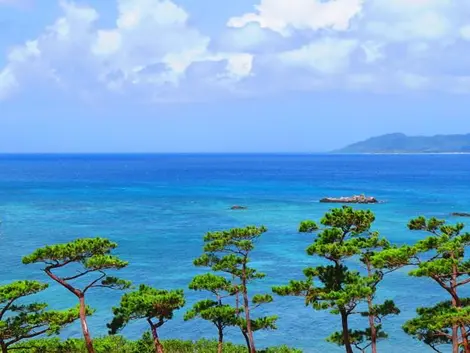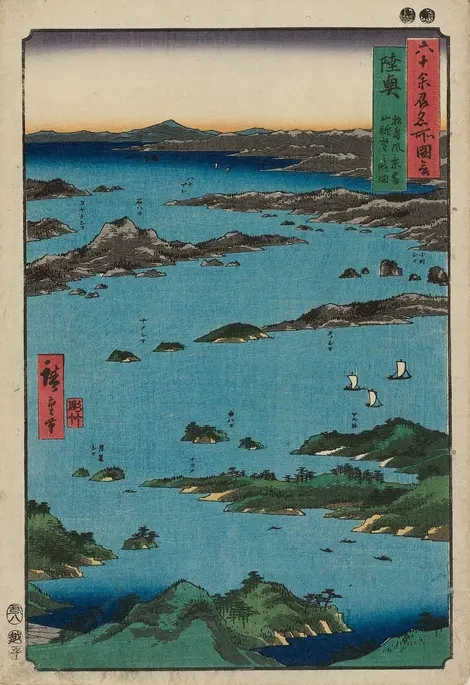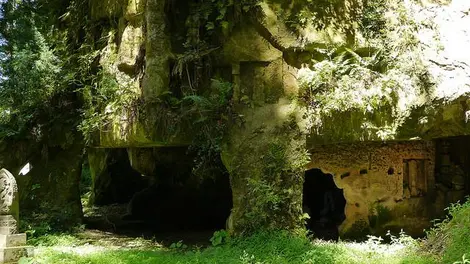Matsushima Bay 松島
- Published on : 26/05/2017
- by : A.B.
- Youtube
The pearl of Tohoku
The Matsushima archipelago in northeast Japan is not only one of the country's three most beautiful landscapes. It's also a cultural treasure more than a thousand years old.
Matsushima Bay, in the Tohoku region, is one of Japan's most breathtaking sights. The pine trees that cover its 260 islets have given the archipelago its name, "Pine Islands", and earned it a place in the Nihon sankei, the country's three most picturesque landscapes, alongside Itsukushima, on the island of Miyajima, and Amanohashidate, north of Kyoto.
A geological rarity
The Matsushima islands are the result of a singular geological phenomenon: each of them is the emerged tip of an ancient valley covered by water as a result of tectonic movements. Within the archipelago, the sea is no more than 10 meters deep. Time has left only these islets, and erosion has given them every imaginable shape, some of them mushroom-like. Pine trees took advantage of these favorable natural conditions to cover the archipelago with a mantle of greenery and complete its unique Japanese landscape.
Cruise between the islands
To admire these islands, nothing beats a boat cruise. Several companies offer tours departing from the port of Matsushima, just a few minutes' walk from Matsushima Kaigan station. For between 1,000 and 1,500 yen (€8 and €12), you can enjoy the scenery along the water's edge. Some cruises take you as far as the nearby island of Shiogama and its Shinto shrine. Others will take you as far as Oku-Matsushima, a remote area less popular with tourists. Regular departures from 10 a.m. to 4 p.m.
Walking tours
Two islands are linked to the mainland by bridges, making them easily accessible on foot. The first isOshima Island, once a place of asceticism for the monks of Matsushima. It still features decorated caves used for meditation. Today, Oshima Island is an ideal place for walks in the shade of pine trees. The second island is Fukuura-jima, reached by a 252-metre-long bridge (cost: 300 yen / €2.40). It also offers several footpaths and lovely views over the bay.
An artist's inspiration
The beauty of the Matsushima archipelago amazed the poet Matsuo Bashô (1644-1694), who was moved to the point of losing his words. From his visit to the bay, the master of haiku could only leave posterity these three now-famous interjections:
Matsushima!
O Matsushima!
Matsushima!
(from Oku no Hosomichi - The Narrow Path at the End of the World)
Matsushima Bay also inspired the ukyo-e genius Utagawa Hiroshige (1797-1858). The painter used it as one of his Views of Famous Sites in the Sixty-Some Provinces of Japan, a series of prints painted between 1853 and 1856 to immortalize Japan's most beautiful landscapes.
A temple reflecting nature
The site not only inspired poets and painters. Buddhist monks also saw it as the ideal place for a monastic retreat, in buildings built to reflect the natural beauty of the site. The most famous is the Zuigan-ji temple. Founded in 828, it first belonged to the Tendai school before being converted into a Zen temple during the Kamakura period (1192-1333).
See also: Zen in Japan
Restored by the feudal lord Date Masamune in 1609, it is a typical example of classical Japanese architecture. The main hall and kitchen are listed as national treasures. The temple is also famous for its magnificent fusuma, richly decorated Japanese sliding doors, and for its long cedar-lined alley that serves as a natural vestibule.
The symbol of Matsushima
Right next to Zuigan-ji is another Buddhist temple:Entsu-in. It was built in 1646 as a mausoleum for the son of another lord, Date Mitsumune. The interior is decorated with gold leaf and paintings, some inspired by Christian art. Don't miss the garden of moss and maple trees that borders the monastery.
Another temple is Godaidô, built into the side of a cliff and now the symbol of Matsushima Bay. Dating back to 807, it houses five sacred statues that are only shown to the public every 33 years! See you in 2039...
Kanrantei tea house
Originally built in Kyoto by the great daimyô Toyotomi Hideyoshi (1537-1598), this Momoyama-style teahouse was donated to Lord Date Masamune and moved to Matsushima. The Kanrantei, "Pavilion for contemplating the waves", offers a vantage point overlooking the sea and the islands of the archipelago. The building features two rooms adorned with fusuma, which were once used to house the wives of feudal lords, princesses and shogun emissaries. Visit the house with a cup of matcha tea (from 600 yen / €5), before visiting the museum, which displays weapons, armor and other relics of feudal Japan.
Nb: Matsushima Bay, like the entire Sendai coast, was hit by the tsunami of March 2011. While most of it has now been rebuilt, work on some buildings may still be underway.
Address, timetable & access
Address
Timetable
From Tokyo station, take the Shinkansen to Sendai (1h32). From Sendai, hop on the JR Senseki train and get off at Matsushima Kaigan station (38 min). Total cost: 6,260 yen (€50). Free with Japan Rail Pass.

































